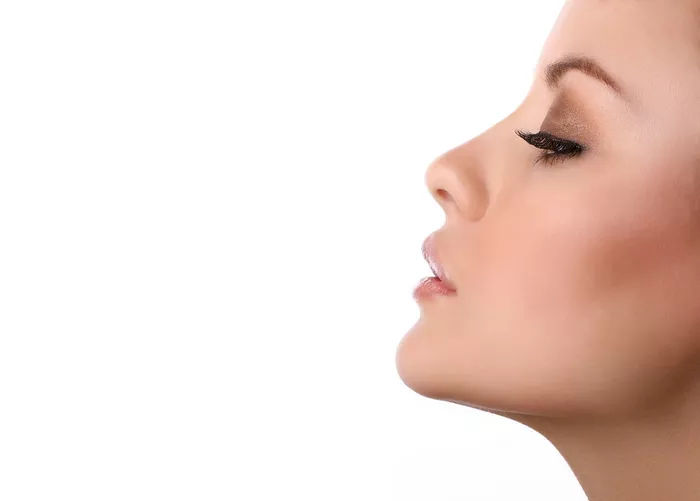Rhinoplasty, commonly known as a nose job, is a cosmetic surgery procedure that is designed to improve the appearance and function of the nose. Closed rhinoplasty is a surgical technique that is used to reshape the nose without leaving any visible scars. This technique involves making incisions inside the nostrils, which allows the surgeon to access the underlying bone and cartilage. In this article, we will explore how closed rhinoplasty works, its benefits, and what to expect during the recovery process.
What is Closed Rhinoplasty?
Closed rhinoplasty is a surgical technique used to reshape the nose without leaving any visible scars. This technique is also known as endonasal rhinoplasty or scarless rhinoplasty. In this procedure, the surgeon makes incisions inside the nostrils, which allows them to access the underlying bone and cartilage. The surgeon then reshapes the bone and cartilage to achieve the desired result.
Closed rhinoplasty is typically performed under general anesthesia and can take between one and three hours to complete, depending on the complexity of the procedure. The procedure is usually performed on an outpatient basis, which means that the patient can go home the same day.
Benefits of Closed Rhinoplasty
No visible scarring: One of the most significant benefits of closed rhinoplasty is that it does not leave any visible scars. This is because all of the incisions are made inside the nostrils.
Faster recovery time: Because there are no external incisions, the recovery time for closed rhinoplasty is typically faster than for open rhinoplasty. Patients can usually return to work and other normal activities within one to two weeks.
Reduced risk of complications: Because closed rhinoplasty is a less invasive procedure than open rhinoplasty, there is a reduced risk of complications such as infection, bleeding, and scarring.
More precise results: Because the surgeon has direct access to the bone and cartilage through the nostrils, they can achieve more precise results with closed rhinoplasty.
Less postoperative pain: Because there are no external incisions, patients typically experience less postoperative pain with closed rhinoplasty.
How Closed Rhinoplasty Works
Anesthesia: Closed rhinoplasty is typically performed under general anesthesia, which means that the patient is asleep during the procedure.
Incisions: The surgeon makes incisions inside the nostrils, which allows them to access the underlying bone and cartilage.
Reshaping the nose: The surgeon then reshapes the bone and cartilage to achieve the desired result. This may involve removing or adding tissue, or repositioning the existing tissue.
Closing the incisions: Once the reshaping is complete, the surgeon closes the incisions with dissolvable sutures.
Recovery: After the procedure, the patient will be taken to a recovery area where they will be monitored until they are ready to go home. The patient will need to wear a splint on their nose for several days to help support the new shape of the nose.
Recovery from Closed Rhinoplasty
Recovery from closed rhinoplasty typically takes one to two weeks. During this time, patients should avoid strenuous activities and should keep their head elevated as much as possible to reduce swelling. Patients may also experience some bruising and swelling around the nose and eyes, which can be managed with pain medication and cold compresses.
Patients should also avoid blowing their nose for several weeks after the procedure to avoid disrupting the healing process. It is also important to avoid wearing glasses or sunglasses that rest on the bridge of the nose for several weeks after the procedure.
It is important to follow the surgeon’s postoperative instructions carefully to ensure a smooth recovery and optimal results.
Who is a Good Candidate for Closed Rhinoplasty?
Closed rhinoplasty is a good option for individuals who want to improve the appearance or function of their nose but do not require significant changes. This technique is best suited for individuals who have mild to moderate nasal asymmetry, a small bump on the bridge of the nose, or a slightly deviated septum.
Closed rhinoplasty may not be suitable for individuals who require significant changes to the nasal structure, such as those with severe nasal asymmetry or a severely deviated septum. In these cases, open rhinoplasty may be a better option.
Choosing a Surgeon for Closed Rhinoplasty
Choosing the right surgeon for closed rhinoplasty is an important part of the process. Here are some tips for finding a qualified surgeon:
Look for board certification: Choose a surgeon who is board-certified in plastic surgery. Board certification indicates that the surgeon has completed rigorous training and has passed a comprehensive exam in plastic surgery.
Check the surgeon’s experience: Choose a surgeon who has experience performing closed rhinoplasty. Ask to see before-and-after photos of the surgeon’s previous patients to get an idea of their results.
Read reviews: Check online reviews from previous patients to get an idea of the surgeon’s bedside manner and the quality of their work.
Schedule a consultation: Schedule a consultation with the surgeon to discuss your goals and expectations for the surgery. This is a good opportunity to ask any questions you may have about the procedure.
Consider the surgeon’s communication style: Choose a surgeon who communicates clearly and effectively. You want to feel comfortable asking questions and discussing any concerns you may have.
Conclusion
Closed rhinoplasty is a surgical technique used to reshape the nose without leaving any visible scars. This technique offers several benefits over open rhinoplasty, including faster recovery time, reduced risk of complications, and more precise results. If you are considering rhinoplasty, be sure to discuss the benefits and risks of closed rhinoplasty with your surgeon to determine if this technique is right for you. With proper care and follow-up, closed rhinoplasty can help you achieve the nose shape you desire and improve your overall appearance and self-confidence.


